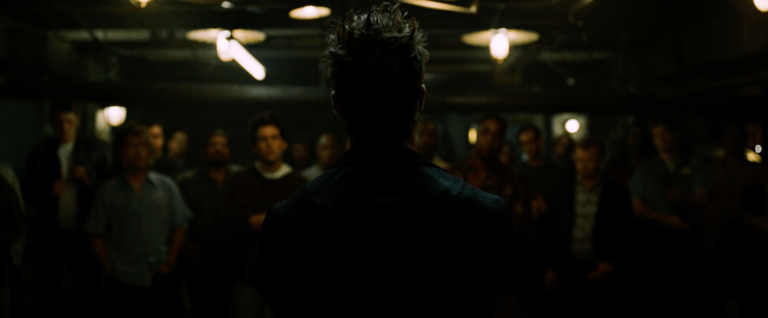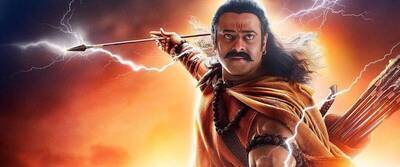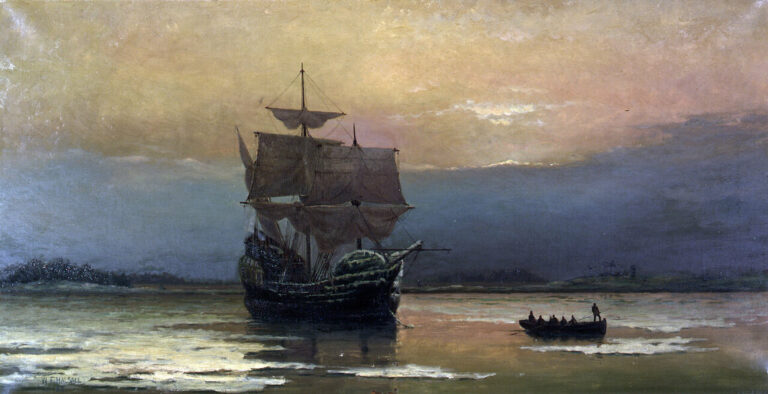Behind the Best Part of Netflix’s ‘Hollywood’
Ryan Murphy‘s Hollywood is an alternate history of Tinseltown in its Golden Age, a fantasy narrative in which the underdogs and the minorities win the respect they never got in our own timeline. Now we are able to relive the glamour of the 1940s while watching a wildly different story than we’re used to.
The worldbuilding is what makes the Netflix Original so enjoyable. That period of Hollywood seems so unreachable and unreplicable, but costume designers Sarah Evelyn and Lou Eyrich do the impossible. I got to pick their brains about how they recreated the era through what the characters wear on screen.
What was your research like for recreating the era?
Lou Eyrich: Sarah did all the work! [laughs] No, I had just come off of Ratched [Murphy’s upcoming series about the nurse from One Flew Over the Cookoo’s Nest], which is about the same time period. So, we carried over a lot of that research. I had a lot of books and other research, but that series takes place on the East Coast. This was Hollywood, so it was a whole different kind of research.
Sarah hired a historical researcher in New York who sent us amazing research that we weren’t finding here in the research libraries or online. There are a lot of books on Hollywood in the 1940s, including what Sarah and I have in our libraries. There are a lot of black and white photos, but it’s hard to find color photos.
Ryan Murphy had a very specific color palette that he wanted, so we kind of followed that anyway. That color palette did shift a bit when Sarah designed the Oscar episodes because we were trying to replicate it for the factual characters. Sarah really had to dig deep for color photographs for that.
Sarah Evelyn: We were lucky to have Lou come off a ’40s show because I definitely got the cliff notes. I did have to somewhat immerse myself in that era in order to make sure all that information made it into our show. Lou and Ryan have worked together, and Ryan has a lot of direction. Between their conversations, a lot of that gets refined and we get down to the old Hollywood color palette. It kind of started at gold and then we brought in some harvest tones. Then, Ryan was very specific about colors with specific characters.
Going back to research, I watched an endless number of movies. Even when I was doing something else, I would have a movie on in the background at home or at work. It helped me inundate myself with it. We also printed out all of our reference photos and covered all our walls with them in the fitting room so we felt like we were in an Instagram account of old Hollywood.
Lou Eyrich: She wallpapered the place! It was great.
Did you look at any specific designers from the 1940s, or did you take a broader approach to the fashions?
Sarah Evelyn: It was both. Especially because costume designers were so influential in the fashion of the period. Ryan is a really big fan of those costume designers. We looked at Adrian [Adolph Greenburg] a lot. We looked at George Hurrell’s photos a lot. We looked at the movies and the big costume designers of the time, like Edith Head and Walter Plunket.
Our researchers had access to Conde Nast archives but also written research as well. It wasn’t all about the photographs. A lot was in what had been written about the fashion at the time. We also ended up accessing Emily Post. We looked at big designers like Claire McCardell and other big American designers. Then we went to the written archives like issues of Women’s Wear Daily from the ’40s and Emily Post’s writing because a lot of fashion was tied to etiquette as well. We’d have to think, “Would she wear a hat in that place?” and then we had those writings for reference.
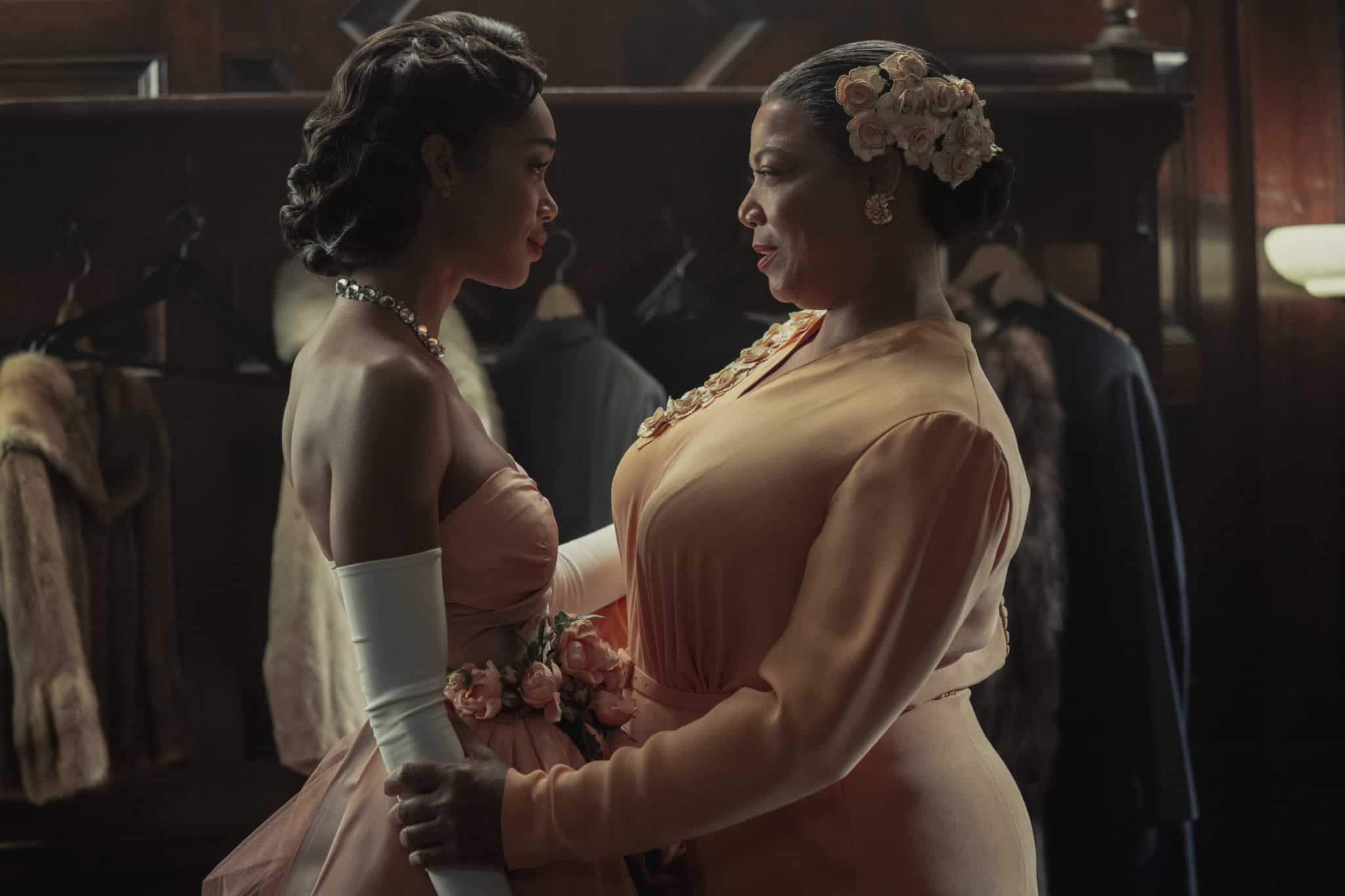
Did you have to learn a lot about history outside of just fashion to create these costumes?
Lou Eyrich: I would say absolutely. We wanted to read magazines in order to get our minds into what was happening in the world at that time. At the same time, this was Hollywood’s look at fashion during this time, which was all about the glamor of Tinseltown. We had to read about who was running the studios at the time. We had to read a lot about Rock Hudson’s early years to educate ourselves who was running Hollywood at that time. Sarah mentioned the etiquette, which had a deciding factor on when women wore gloves and hats.
Sarah Evelyn: Especially at that time, fashion was incredibly influenced by world events because the country was just coming off of World War II. There had been rationing that directly affected fashion like the lack of silk stocking available led women to use eyebrow pencils to draw seam lines up their shins.
How did you deal with the expectations people have for the characters based on real celebrities, and how did you go about dressing those characters?
Sarah Evelyn: We did a lot of research. A lot of these characters were based on real [people], but as Lou said, we were looking to dress Rock Hudson before he became a star. That was a place there wasn’t really photo reference of him at that time. It was a bit of collaboration between the actor and what research we were able to find, like knowing where he was from and what he was doing before Hollywood. He had just been driving a truck, so we thought he would be a little more simple. We were developing a closet that underlined the kind of character he was, which was this all-American guy who also had this effortless star quality.
Looking into the more one-off cameos like the celebrities at the Oscars and other appearances like Cole Porter, we would look into the research that was available and melt that with what the actor could pull off or what looked right for the character in our color palette. It was our aim to stay very true to the period and develop costumes that these characters certainly would have worn.
Did you have any sort of leeway with the costumes since this a fantasy version of this era?
Sarah Evelyn: I would say we were very committed to being period-correct while also using color in a way that lent itself to the story. Archie was our jazz baby, our natural artist type. There’s one picture where he’s in mint green pants, a burnt orange shirt, and a beige sweater-vest with maroon and forest green in it. Was that color combination common in the 1940s? Maybe not, but it was for Archie and it worked for him. We tried to be historically accurate while allowing the costumes to show our characters as well.
Lou Eyrich: I think we did go a little more Technicolor. There was a heightened sense of glamor and color, but the silhouette was very much historically accurate. Ryan gave his direction as well, like when Sarah designed the costume for Queen Latifah [who plays Hattie McDaniel], he was very specific about the kind of flowers in her hair and how they were placed. There were certain characters that Ryan wanted to portray as historically accurate as possible and then there were other characters, especially the ones that were fictional, that we could play more.
Sarah Evelyn: In addition to silhouette, we tried really hard to find a fabric that would look period, which can be really difficult. For example for the [gas station] uniforms, we had a big fabric hunt, because modern uniform material does not feel or look the 1940s.
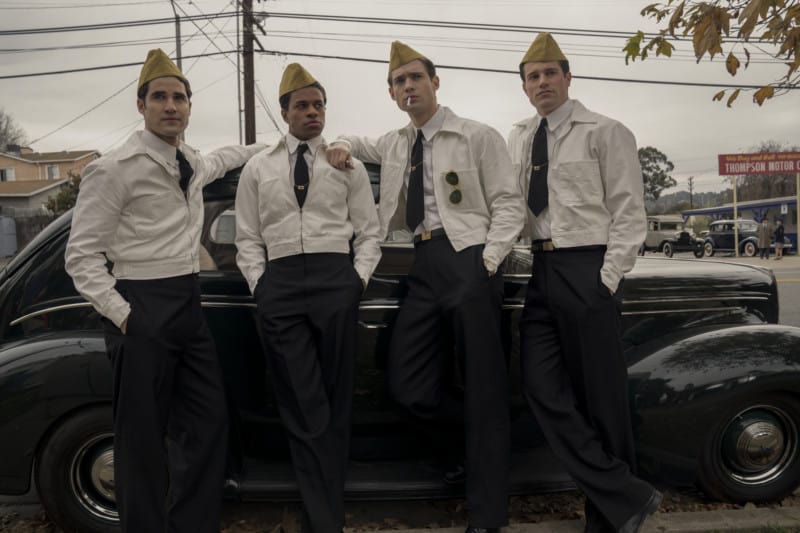
Did you get any physical pieces from this era to use, or did you mostly recreate styles to use for the costumes?
Sarah Evelyn: We did get vintage pieces. It was a real hunt trying to find vintage clothing because there are so many period shows right now. First of all, Lou has accumulated a brilliant library of vintage sources. We and our shoppers hunted, hunted, hunted every weekend. Every time we heard a show was wrapping, we were first up to see what we could get from them.
We got a lot of vintage clothing, but we made a lot as well. We did that for a couple of reasons. One: a lot wasn’t available. Two: vintage sizes tend to be smaller. There aren’t shirts that accommodate men with longer arms, and most of our guys have long arms. Sometimes, technically, we had to remake. We would put some on our actors to see if they would work for them. Darren [Criss], Jeremy Pope, Samara Weaving, and Laura Harrier could go into a lot of vintage clothes, so they wore a lot of vintage pieces. A lot of the closets we made, and then we would use vintage pieces that we found for inspiration.
Lou Eyrich: There was this one dress we really loved for Holland [Taylor] that had this great chevron patterning. We loved it and Holland loved it, but the actual vintage piece would’ve needed so many alterations and it was in bad shape. It was easier to find fabric and remake it as is. We had this amazing tailor who was able to replicate the dress. That was an example of finding a piece we loved, but it wasn’t sustainable enough to last even an eight-hour workday without falling apart.
Is preserving those vintage pieces ever a factor in whether you’ll use them in the costumes or not?
Sarah Evelyn: Definitely, especially when they’re from the costume house and you rent them. Preserving is a very important consideration. When it’s something that you’ve bought, it’s a little different because someone else doesn’t own it. You could potentially risk that, but these costumes have to last for days. People take them on and off and eat lunch in them. We have to think if it’ll make it, because if it doesn’t, then we’ll have an even bigger problem.
Lou Eyrich: We had a few instances where women were allergic to wool. A lot of the pieces were made of wool since there weren’t synthetics. We would have to really scramble in those cases to find an alternative. We really wanted to use the vintage piece, but we couldn’t because it was a material issue.
Do current trends in fashion and beauty ever have an influence on what you can do with the costumes?
Sarah Evelyn: I think in this case no, but it’s hard to say because you’re always influenced by what you see. We had a specific color palette from Ryan. We really tried to stay true to the period. I feel like we created our own world here and there. Maybe there is unknown outside influence. For instance, there might be something an actress feels really works, and it might have something to do with her modern eye, but I remember us having conversations about how to adjust the modern eye. There’s what might look right for now, but we had to back up and make sure it would look right for the time.
Lou Eyrich: It’s almost the opposite. We found that with the ’40s look because it’s been copied in contemporary times, it was hard to make it look period. The Katharine Hepburn look — the high-waisted, wide-leg pant and the little blouses — is very much worn today. When we would put Henrietta (Maude Apatow) or Camille (Laura Harrier) in those looks it almost looked too modern. Once you put the hair and the shoes and the makeup together, it instantly looks back in the ’40s. Sarah and I both love the very tomboy-ish style and we love the high waisted pants with the blouses and maybe a blazer, so it’s funny when you wear it in your life and then you go to implement it to look like the ’40s.
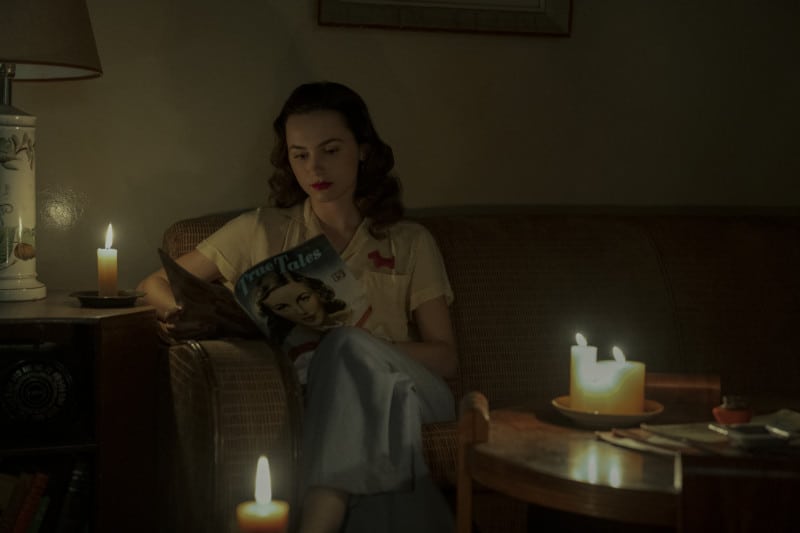
What were your favorite scenes to find clothes for in this series?
Sarah Evelyn: I’d say my answer has three parts, but I gotta say I really enjoyed all aspects of the costuming. Working with Lou and the characters at the beginning for the initial fittings for Episode 1. Then there are two events, a party at George Cukor’s house and then the Oscars, and I would say those outfits were the biggest bang for your buck and fun in that way. I also really liked the more nuanced moments, like I really liked developing Jack’s wife Henrietta’s costumes. She was kind of a Hollywood-have-not. She was in Hollywood and her husband was trying to make it, so she didn’t have much. I would say developing the costumes for each character was really fun and meaningful.
Lou Eyrich: I agree with Sarah. More than a scene, I really did enjoy our first fitting with Dylan McDermott, where we got to collaborate with him. He came in knowing what he wanted to do with his hair, that he was going to smoke a cigarette, and that he’d like a ring on this finger. He had already been working on his character, so it was really fun working with him to figure out who is Ernie when he’s not in his uniform.
That was one of my favorite moments, but I was only on the pilot. I will say that how I saw Sarah working through the other episodes that the team worked at such a fast pace, as television shows often do. Some days she had two units going and she couldn’t possibly be in two places. I feel like she had to whip things together literally overnight and send it off with a little wing and prayer.
There are many moments I would see dailies and just be in awe that they were able to pull it off with such grace even though I knew there was a lot of panic-repeat-panic-repeat. The girls in the red dresses at the gas pump, they got they note two days before it was needed while working on clothes for a funeral scene and she just had to spit those dresses out. I look at those scenes and think they’re some of my favorites that she whipped together, but she probably looks at them and has a little PTSD.

